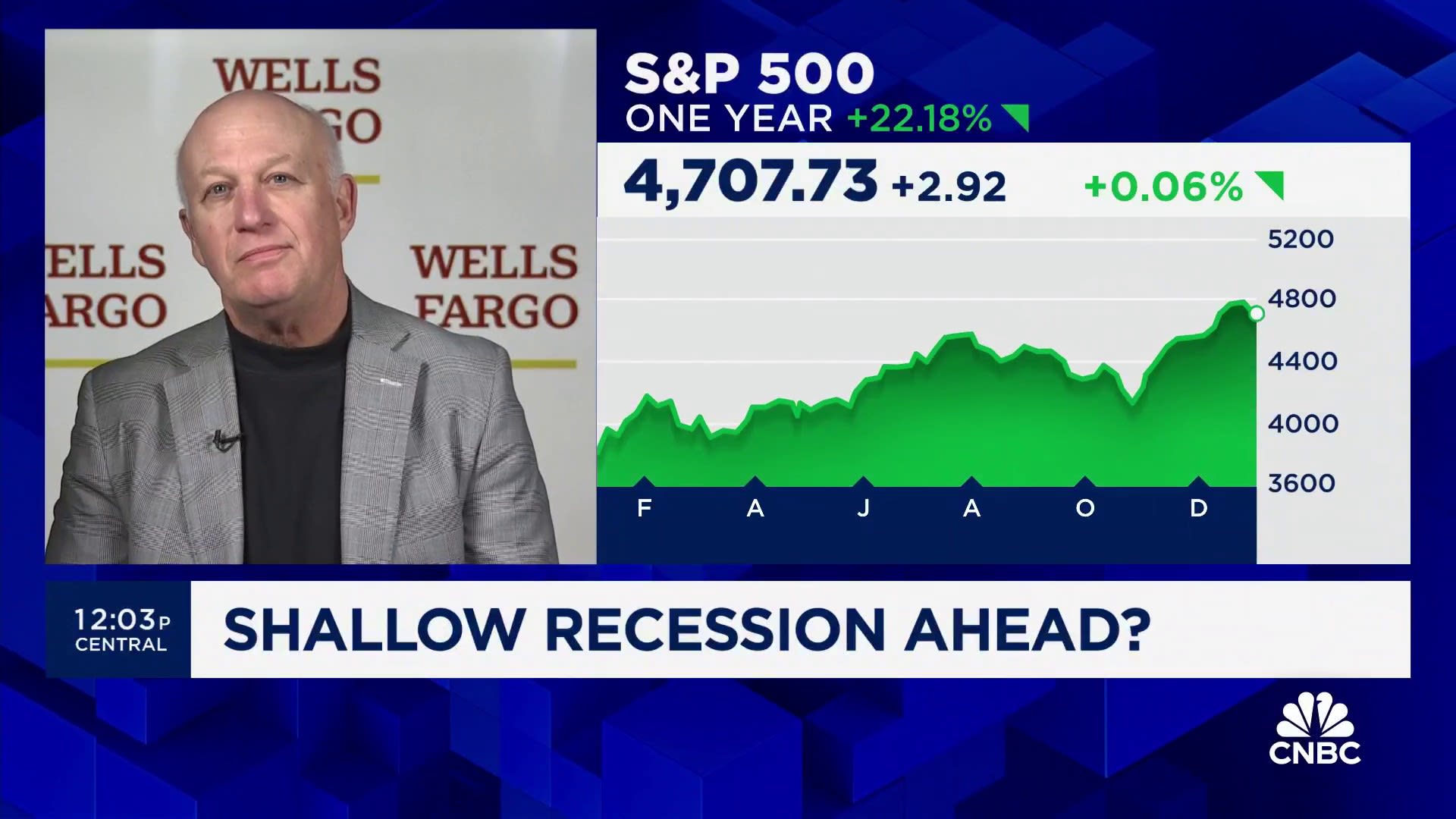A now hiring sign is posted in front of a U-Haul rental center on November 03, 2023 in San Rafael, California.
Justin Sullivan | Getty Images
When the December jobs report is released Friday morning, markets will be looking for a number that hits a sweet spot between not so robust as to trigger more interest rate hikes and not so slow as to raise worries about the economy.
In market jargon, that quest for the middle is sometimes referred to as a “Goldilocks” number — not too hot, not too cold — that can be difficult to find.
But in this case, the good news is that the range looks to be pretty wide with a higher probability of good news than bad.
While the Dow Jones estimate is for a nonfarm payrolls gain of 170,000, Art Hogan, chief market strategist at B. Riley Financial, said the acceptable range is really something like 100,000-250,000.
“I just feel like we have a much better receptivity to good news being good news now that we know that that’s not going to induce another rate hike,” Hogan said. “It’s just going to push off a rate cut.”

As things stand, markets figure the Federal Reserve is done hiking rates and could start cutting as early as March, eventually lopping off 1.5 percentage points from its benchmark rate by the end of 2024. Recent news coming out of the Fed is pushing back at least a little on that anticipated trajectory, and a strong jobs number could dampen the likelihood of policy easing that quickly.
“If we were to get above [250,000], then people might look at that and say we have to cancel March as a potential rate cut and maybe take one off the table for this year,” Hogan said. “Frankly, we know we’re at a place now where the Fed is done raising rates. So if that’s the case, clearly good news could be good news. It’s just how good the news could be before you get concerned that some of the hope for rate cuts might get pushed out into the back half of the year.”
High hopes for cuts
Markets have gotten off to a rocky start in the new year as rate-sensitive Big Tech stocks have lagged. Traders are anticipating that the Fed will ease up on monetary policy, though such an aggressive schedule of cuts could imply something more than winning the battle against inflation and instead may infer economic weakness that forces the central bank’s hand.
Hogan said investors should be taking that into consideration when thinking about the impact of lower rates.
“This is a market that’s gotten itself a little jazzed up about rate cuts and when they’re going to happen,” he said. “People need to focus on why they’re going to happen.”
“If the wheels are coming off the economic cart and the Fed has to rush in to stimulate that, that’s bad rate cuts, right?” he added. “The good rate cuts are if the path of inflation continues toward the Fed’s target. That’s a good rate cut. So if that doesn’t happen until the second half, I’m fine with that.”
As usual, markets will be looking at more than the headline payrolls number for the health of the labor market.
Digging through details
Wages have been a concern as an inflation component. The expectation for average hourly earnings is a 12-month growth rate of 3.9%. If that proves accurate, it will be the first time wage gains come in under 4% since mid-2021.
The unemployment rate is expected to tick up to 3.8%, which will still keep it below 4% for 23 straight months.
“The overall picture is one in which the labor market is gradually decelerating in a very orderly fashion,” said Julia Pollak, chief economist at online jobs marketplace ZipRecruiter. “I expect December to continue the trend of just gradual cooling to around 150,000 [new jobs], and possibly a small uptick in unemployment because so many people have been pouring into the workforce.”
The labor force grew by about 3.3 million in 2023 through November, though the trend has had little impact on the unemployment rate, which was up just 0.1 percentage point from the same month in 2022.
However, Pollak noted that the hiring rate is still below where it was prior to the Covid pandemic. The quits rate, a Labor Department measure that is looked at as a sign of worker confidence in finding new employment, has tumbled to 2.2% after peaking at 3% during the so-called Great Resignation in 2021 and 2022.
The jobs picture overall has shifted since then, with the once-hot tech sector now lagging in terms of job openings and health care taking the lead, according to Nick Bunker, economic research director at the Indeed Hiring Lab.
“We’re seeing a labor market that is not as tight and as hot as what we saw the last couple years,” Bunker said. “But it’s got into a groove that seems more sustainable.”








